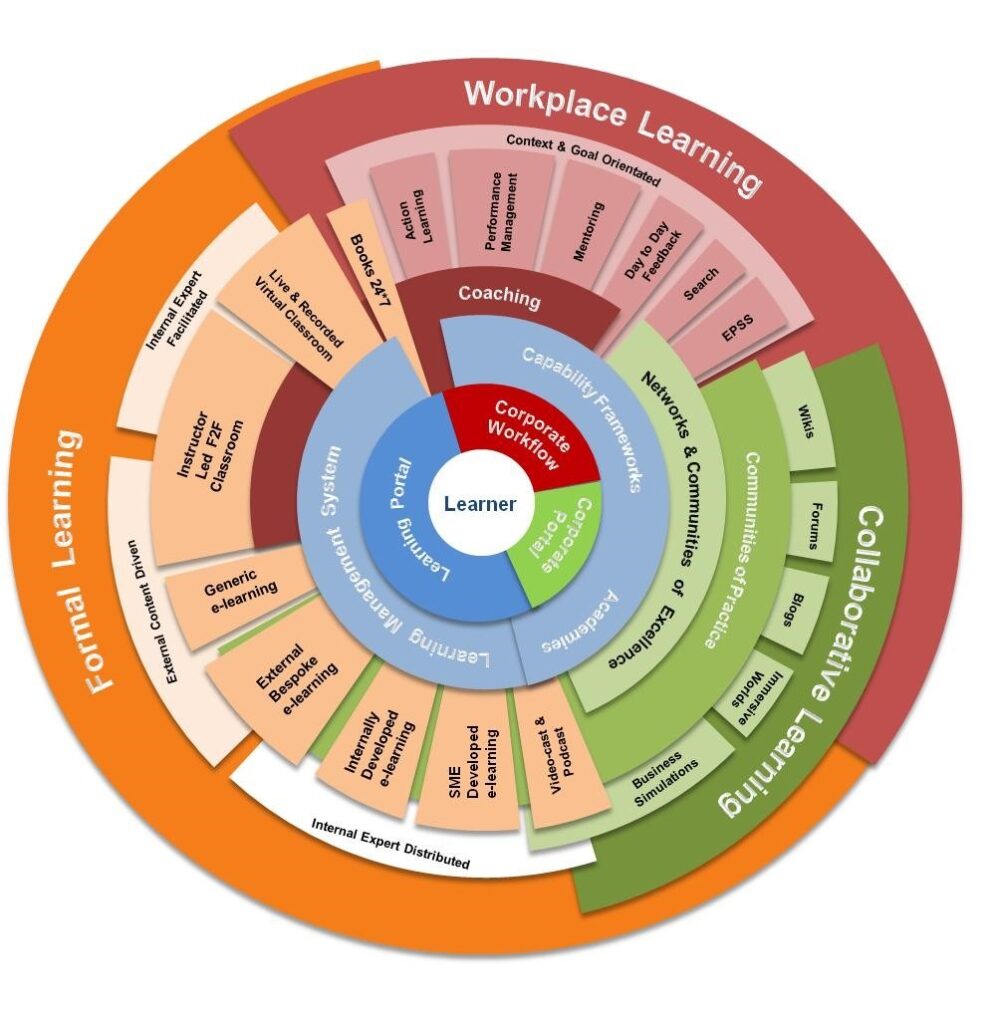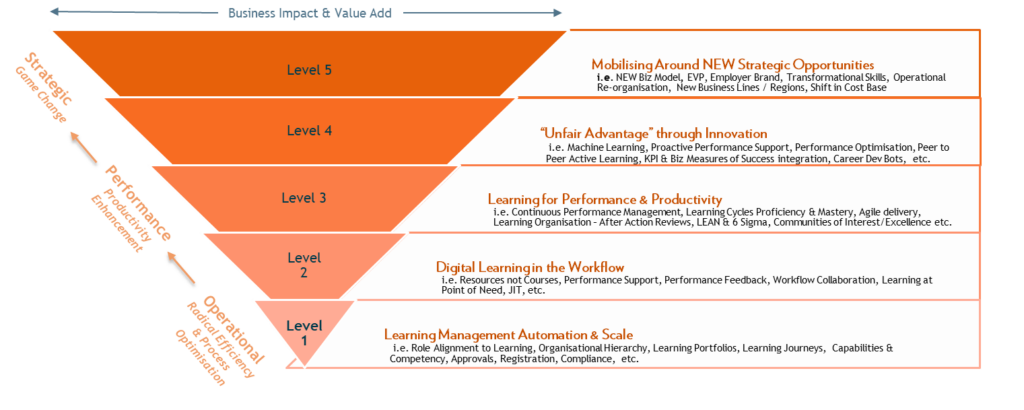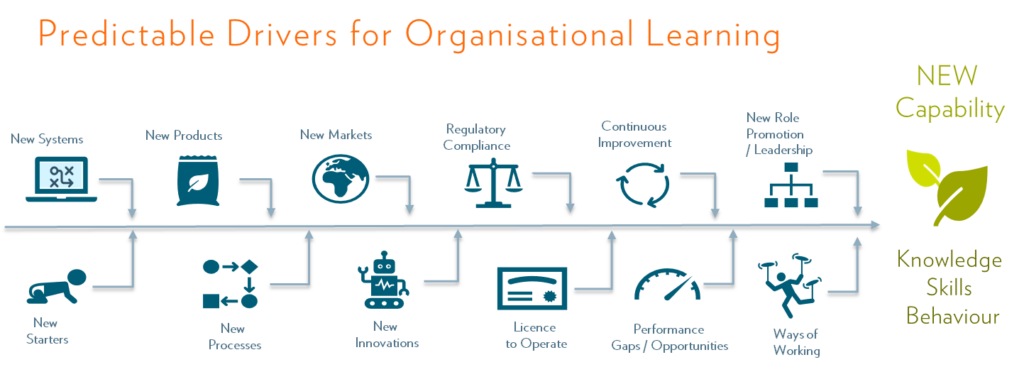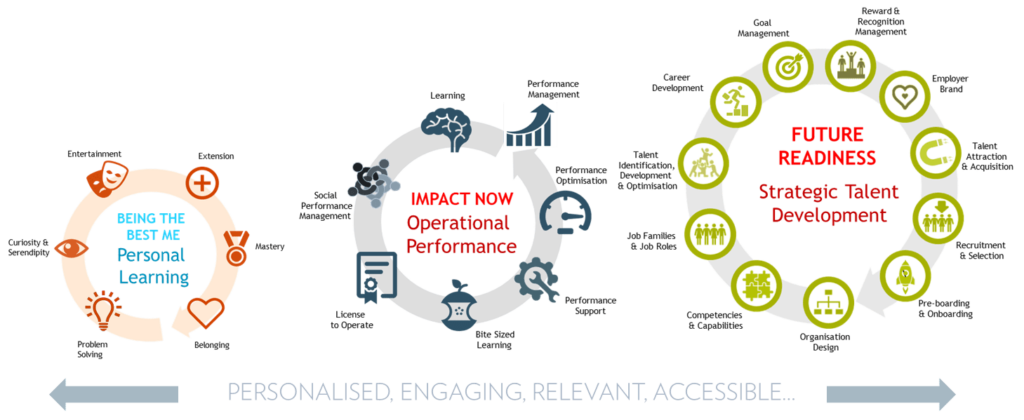How to Build a Simple Digital Learning Strategy that Works
Getting started with digital learning can be deceptively simple. Buy some online content, put the content into a platform, then market it to your audiences to increase use. Voila! You have a digital learning strategy. Or do you?
The truth is that executing in such an overly simple way will not be the most impactful thing to do. Just as converting your old face-to-face courses directly to virtual classroom courses isn’t the best use of learning technology. So, what does it take to build a digital learning strategy that works?
To start, you have to first ask your organisation the right questions, then build your solutions around the answers if you are to be more impactful to your organisation’s performance.
Economic shockwaves are coming in the wake of the COVID-19 pandemic which are going to drive truly challenging business decisions. Knowing your organisation’s context and priorities should help drive the right approach to become an agent of value, as well as a cost efficiency driver. With that in mind, here are some simple rules to follow.
Rule #1. Focus on exceptional value adds, radical cost savings, and speed to value
Learning powers change. And in the midst of a crisis, those that learn fastest are the ones that survive. If you don’t know which projects in your organisation are the game changers, then you won’t know where learning can potentially have the most impact.
And if you don’t know, you won’t have a context for what your digital learning should be supporting. Your function will be a cost, not a contributor, if you aren’t supporting the real business measures and results.
Rule #2. Understand the predictable drivers for learning in your organisation
Outside the gamechanger projects, there are usually predictable drivers for learning where you can demonstrate value. Your digital learning strategy needs to facilitate new systems, new starters, new processes, new products, new markets, new innovations, regulatory compliance, licenses to operate, continuous improvement, performance opportunities / resolving gaps, new promotions and leadership roles, and new ways of working. How you use technology to support these will be driven by the context of the audience and the nature of the learning need. The opportunities to impact change are all around you if you know where to look.
Rule #3. Put yourself into the shoes of the end user and understand their context
Profiling your audience, how they work, what they need to do, who they are and where they work is essential. Understanding the personas you are serving is a bedrock.
Think about their context through three key lenses (see diagram below) of personal development, business performance, and strategic talent development. Each have different components and types of learning solutions that are more or less relevant. But what we consistently find is that solutions which support future workforce readiness – the solutions that help you mobilise your organisation around future business lines, future skills and career development – are rarely great at delivering support for operational performance.
Now, the pressure for operational performance is going to be intense over the coming months. So thinking about how you intertwine social performance management, collaboration, performance support, bite-sized learning, and learning in the flow of work, is going to be a key part of understanding what needs to take precedence as you look to enable more digital learning in your organisation.
Rule #4. Get into an AGILE way of thinking
AGILE is an important concept for L&D to embrace if it is to survive in the months to come. There are two critical ways of thinking about AGILE in the learning context. One is seeing learning projects as AGILE. Think about small but viable solutions that can be delivered quickly and improved in sprints – rather than always seeking to deliver a complete and final solution. The second is to think about individuals as their own “minimum viable products,” with two-week sprints of improvement, reflection, and the next stack of development. This is not just about faster delivery; it’s about learning and its impact on improvement as incremental – a cycle of continuous improvement. This has two important outcomes: 1) it means value adds are clear, and 2) value is added as soon as possible.
Rule #5. Act tactically, think strategically
One of the challenges of working to short deadlines is you can lose sight of the bigger picture. And the one thing you should hang onto is where you want your learning strategy to go! In delivering short term projects, you should also make significant, longer term, strategic shifts in how learning happens and your overall learning culture.

What has been systemically weaker is the shift to support workplace learning.
As you digitise your formal delivery channels, adopting virtual classrooms and online content, it is also important to think about how digital learning technology can be harnessed outside formal content. Think about how you can use action-based learning, performance support, mentoring, virtual coaching, and feedback. These offer huge opportunities to learn potentially faster and more effectively than formal approaches.
Rule #6: Know your measures of success – business, team, individual, & L&D
One of the most essential aspects of leading a learning function is to be able to clearly state the contribution L&D is making to your organisations. Whilst attendance and user satisfaction surveys are all well and good, they do not provide enough ammunition when the Finance Director is calling for budget and headcount reductions. The only insulation to cuts is to show the difference your L&D team makes.
Rule #7: Use what you have
Just because you can follow the words ”collaborative” and ”workplace” with the word ”learning” does not mean you need to adopt specialist digital learning solutions to support them. You should probably explore, and make the most of, the tools that are already available in your organisation. Our recent research indicates that 84% of learning professionals now think their tools should have a closer integration with collaboration tools such as Microsoft Teams, Slack, and Trello, etc. So, understanding the learning experience and journey to expertise is something that may not need extra learning tools, and may be more about facilitating better use of what exists across your organisation.
Your Next Steps
When times are tough, as they are now, and if you can base your digital learning approach around these rules, you’ll find that your strategy is more robust, more valued, and more important to your organisation than ever before.
Despite all the hype, what you have to remember is it’s just learning. The digital aspect is just another channel – not the strategy itself. And we’ll be unpacking this – and more – in our webinar on 24 June 2020 at 2pm GMT. Register now for Getting Started with Digital Learning – What you need to know! We look forward to seeing you there.
For more information you can follow @fosway and @davidperring.








